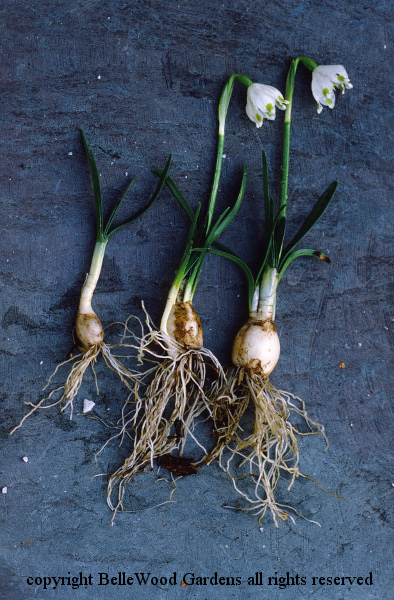
.
If you have any comments, observations, or questions about what you read here, remember you can always Contact Me
All content included on this site such as text, graphics and images is protected by U.S and international copyright law.
The compilation of all content on this site is the exclusive property of the site copyright holder.
A picture, it is said, is worth a thousand words. Today, instant gratification. Digital pictures are so commonplace. Everything up to (or is that "down to") selfies taken with an iPhone seem to clutter the airwaves. They're viewed on camera, on computer, shared with friends, rarely printed. Step back, and it was film, sent away for processing. Slides, to be projected, or prints on paper, with an array of sizes from wallet on up.
Step back again and try to imagine the days before camera. Illustrated books would be in black and white. Woodcuts, lithographs, engravings - perhaps hand colored, which was the only possible option because books were rare, precious, expensive - and had limited print runs. However they served an important purpose.
How to describe plants and animals, familiar or previously unknown. Words, of course. But remember the value of pictures.

Some bulbs of Leucojum vernum, dug from my garden whilst in bloom in Spring
in order to display flower, foliage, bulb, and roots.
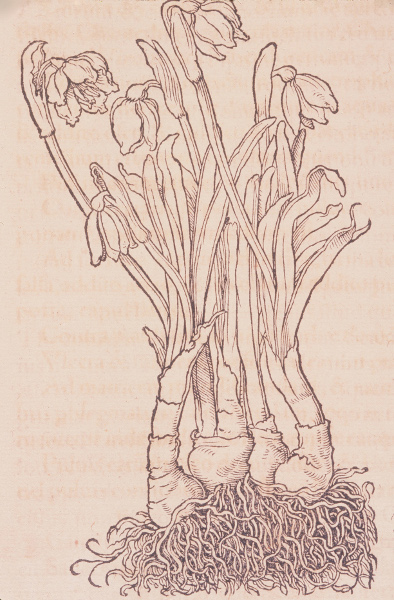
Woodcut, Leucojum vernum, from Clusius Rariorum plantarum historia (Antwerpen: 1601). For his earlier works the printer, Christopher Plantin, ordered the hundreds of exquisite woodcuts from Pieter van der Borcht. Later they were also used also for the herbals of L'Obel and Rembert Dodoens, a Flemish physician and botanist whose immensely popular Cruydeboeck of 1554 was in his day the most widely translated book after the Bible, available in French, English, and Latin.
Or, consider the Hortus Eystettensis (Garden of Eichstatt) of Basilius Besler. First published in 1613, the initial print run of 300 copies took four years to sell. Its engraved copper plates transformed botanical art and illustrations.
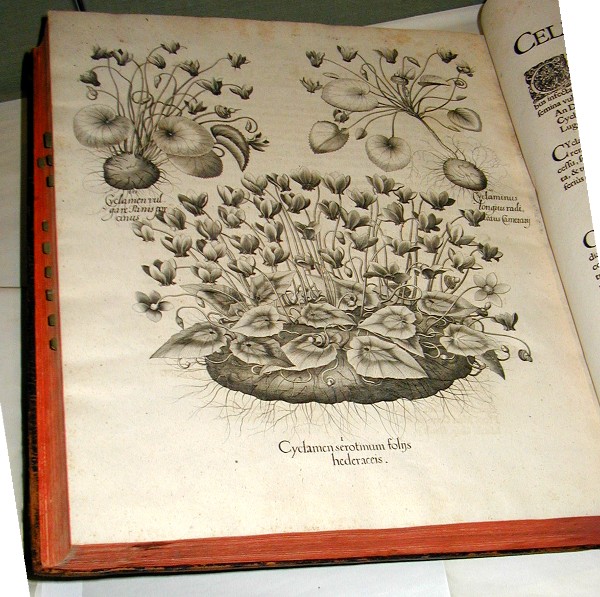
This illustration of a cyclamen is from a copy in the collection of The LuEsther T. Mertz Library of The New York Botanical Garden. I had the distinct pleasure of curating an exhibit of Buried Treasures: The Nature and Art of Bulbs, (reviewed here) and was allowed to delve into their fantastic collection in the Rare Book Room. Previously, I had done research for my first book on bulbs at the Teylers Museum in Haarlem, The Netherlands, with their copy, one with hand colored plates.
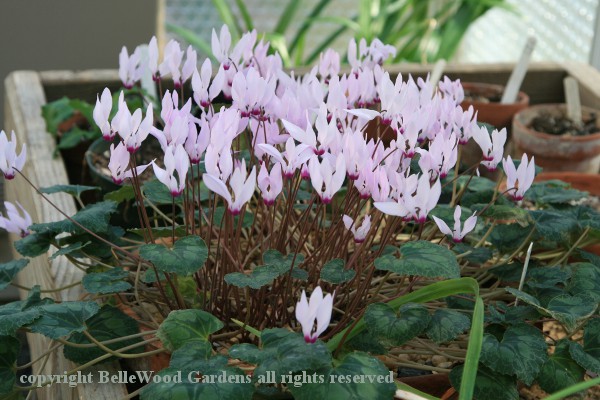
Cyclamen persicum in my collection approximately 40 years at the time this picture was taken.
Botanical art differs from floral art in that the first should accurately depict the plant while floral art is decorative, perhaps showing a bouquet. As in the Clusius woodcut botanical art might display the underground portion of a bulb.
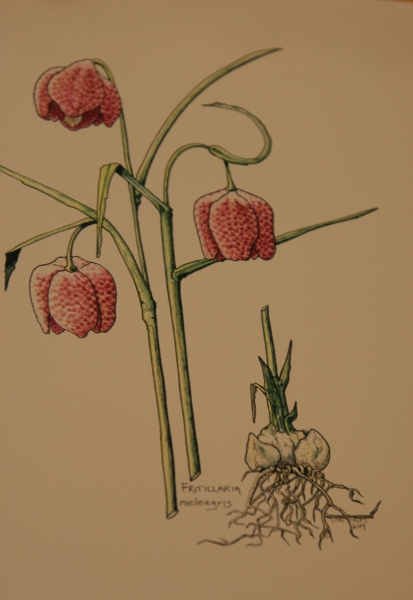
A contemporary piece by Lori Chips, of Fritillaria meleagris.
It might perhaps include an enlarged view of a seed pod, or
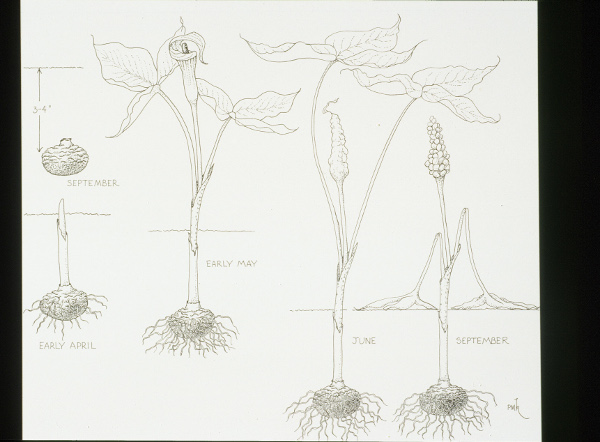
the growth cycle of a plant. Shown here is Arisaema triphyllum, our native Jack-in-the-pulpit. This happens to be one of six illustrations by Pat Kay that I commissioned for my book, Bulbs for Garden Habitats
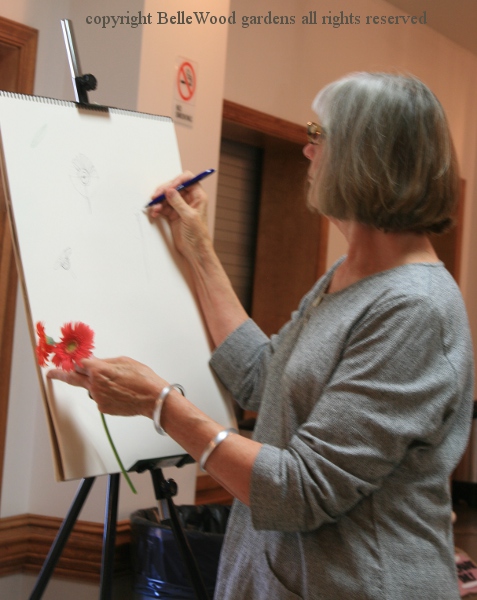
Today's program of the Tohickon Garden Club is on the topic of botanical art. Our presenter, Linda Kneeland first gave a brief talk about botanical art and its history, then explained how to do it yourself. Everyone was given paper, pencil, and a gerbera.
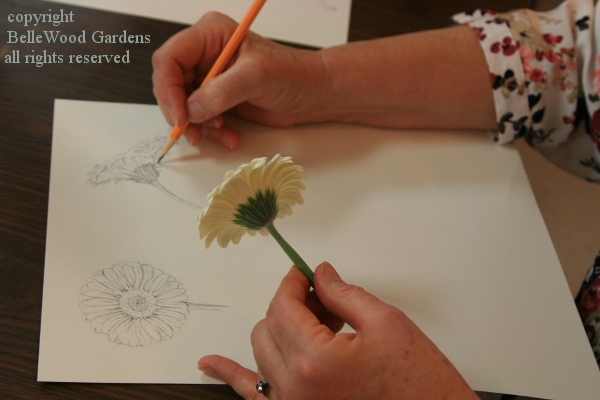
And some, such as Ann Ballentine, did very well (though I think a white flower
might be more difficult to depict than the more vivid, hot hued gerbera flowers.)
I wonder
is there a boundary between botanical art and floral art.
Do the two, perhaps, ever merge.
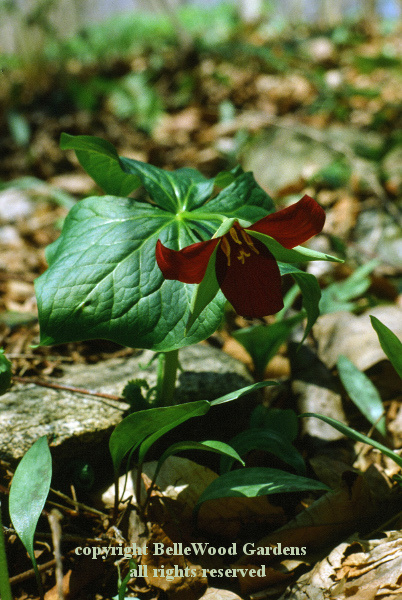
Trillium erectum, one of our beautiful woodland wildflowers.
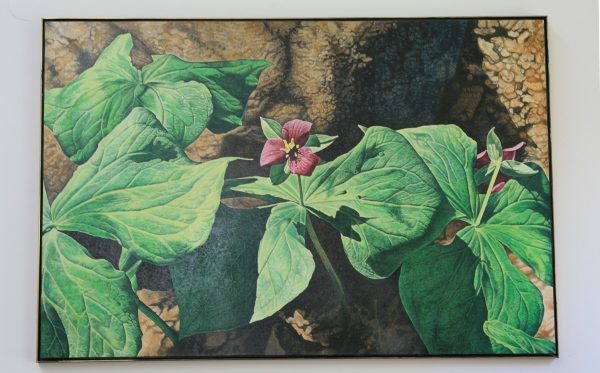
A painting of trillium by Marvin Hayes, egg tempera and sgraffito on masonite.
Or is it what we term "realism" when it is art. I wonder.
Back to Top
Back to August 2015